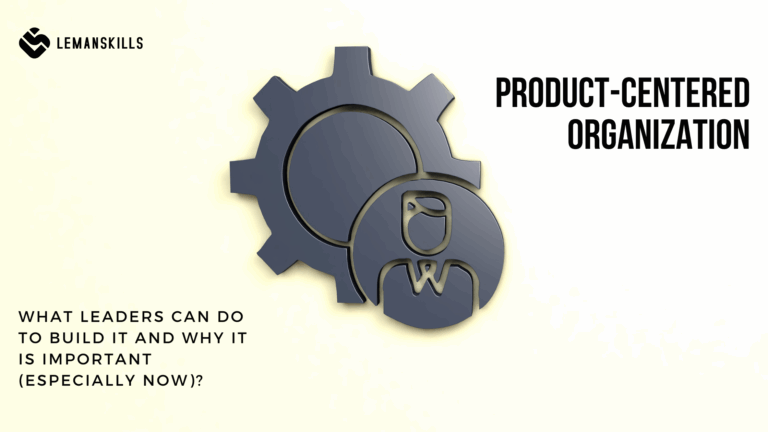As Tech Leaders, we often find ourselves navigating a world of constant change, high stakes, and the persistent pressure to deliver. In this fast-paced environment, mistakes are inevitable. Yet, despite their inevitability, mistakes often carry an unnecessary stigma, especially in the technology sector.
We’ve all been there: a bug in production, a failed sprint, or a product launch that didn’t hit the mark. These moments can feel like personal failures, but they’re also opportunities for growth—if we allow them to be. Unfortunately, many of us are held back by persistent myths about mistakes that do more harm than good. Let’s unpack these myths and explore how tech leaders can reframe their thinking to foster innovation and resilience within their teams.
Myth 1: Mistakes Are a Sign of Incompetence
This is perhaps the most damaging myth of all. In a field as complex as technology, mistakes are not just normal—they’re expected. Yet, many Tech Leaders (and their teams) fear that admitting to errors will make them appear unqualified or incapable.
Here’s the truth: mistakes are not a reflection of incompetence but rather a natural byproduct of working on resolving complex problems. In fact, some of the most groundbreaking innovations in tech have come from mistakes. Take the accidental creation of Post-it Notes or the discovery of penicillin—while not directly tech-related, these examples remind us that groundbreaking discovery often follows missteps.
As a leader, it’s your job to model curiosity. When you own up to your own mistakes and frame them as learning opportunities, you create a culture where your team feels safe to take risks and innovate.
Myth 2: Perfection Is the Goal
Let’s face it: perfection in tech doesn’t exist. There will always be bugs in the code, unforeseen edge cases, or unexpected user behaviors. Yet, many leaders fall into the trap of striving for perfection, believing that flawless execution is the ultimate measure of success. And we do know that’s far from the truth.
The pursuit of perfection can paralyze teams, leading to analysis paralysis and delayed decision-making. Worse yet, it can stifle creativity and experimentation—two critical drivers of innovation in technology.
Instead of chasing perfection, focus on progress. Encourage your team to adopt an iterative mindset: ship, learn, and improve. Agile methodologies are built on this principle for a reason—they prioritize adaptability over rigid adherence to an idealized end state.
Remember, your job as a leader isn’t to eliminate mistakes but to create an environment where mistakes lead to better outcomes.
Myth 3: Mistakes Waste Time and Resources
It’s easy to view mistakes as setbacks that cost time and money. But what if we flipped that perspective? What if we saw mistakes as investments in future success?
Consider this: every mistake your team makes is a chance to uncover blind spots, refine processes, and build resilience. A bug in production might reveal gaps in your testing strategy. A failed product launch could highlight misalignment between engineering and marketing teams. These insights are invaluable—they help you course-correct and prevent larger issues down the line.
Of course, not all mistakes are created equal. As a leader, it’s important to distinguish between reckless errors (caused by carelessness or lack of preparation) and intelligent (or even necessary) ones (made in the pursuit of innovation). Celebrate the latter and use them as teachable moments for your team.
Myth 4: Leaders Should Have All the Answers
As Tech Leaders, we often feel pressure to be the smartest person in the room—the one with all the answers. But this mindset is not only unrealistic; it’s counterproductive.
When you position yourself as infallible, you surprisingly discourage your team from speaking up or challenging assumptions. This can lead to groupthink, missed opportunities for improvement or other limiting biases that rob us from achieving extraordinary results.
Instead, embrace a mindset of continuous learning. Ask questions, seek input from your team, and admit when you don’t know something. By doing so, you demonstrate humility and foster a culture of collaboration and shared ownership.
Remember, leadership isn’t about having all the answers—it’s about empowering your team to find them together.
Myth 5: Mistakes Are Best Swept Under the Rug
In some organizations, there’s an unspoken rule: don’t talk about mistakes. This culture of silence can be incredibly toxic, leading to fear, blame-shifting, and a lack of accountability.
As a leader, it’s your responsibility to break this cycle. Encourage open dialogue about mistakes and frame them as opportunities for growth. Conduct retrospective sessions after incidents or project failures to identify root causes and actionable takeaways.
Transparency is key here—not just within your team but across your organization. When leaders openly discuss their own missteps and what they’ve learned from them, it normalizes the idea that mistakes are part of the process.
Reframing Mistakes as the Golden Key
So how can we, as Tech Leaders, shift our perspective on mistakes? Here are a few practical strategies:
- Lead by example: Share your own experiences with failure and what you learned from them during team meetings or one-on-ones.
- Celebrate learning moments: Recognize team members who take risks and learn from their mistakes—even if the outcome wasn’t what they hoped for.
- Create psychological safety: Foster an environment where team members feel safe to admit errors without fear of punishment or being laughed at.
- Encourage reflection: After a mistake occurs, ask your team reflective questions like “What did we learn?” or “How can we do better in the future?”
- Focus on systems: Instead of blaming individuals for mistakes, look at the systems and processes that contributed to them and identify areas for improvement.
The bottom line
Mistakes are not the enemy—they’re an essential part of growth in the tech world (and beyond). As leaders, our role is not to eliminate mistakes but to create a culture where they’re seen as opportunities for learning and innovation. By reframing these common myths and our approach to failure, we can build teams that are resilient, creative, and unafraid to tackle big challenges.
So next time you or your team makes a mistake, pause for a moment before reacting. Ask yourself: what can we learn from this? Because in the end, it’s not about avoiding mistakes—it’s about using them as stepping stones toward something greater.




